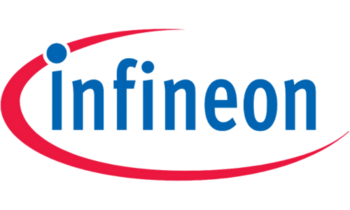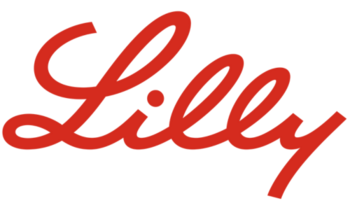Thermoformed component holders
Individual solutions
What are component holders?
Component holders are specialized containers designed for the transportation and storage of various components, parts, or objects. These custom products are tailored to the exact requirements of a customer, and they perfectly incorporate stored products in so-called nests. Component holders are also called load carriers or workpiece carriers.
What is thermoforming or vacuum forming?
Thermoforming, or vacuum forming, is one of two manufacturing processes we use at Utz. It is the process of transforming a thermoplastic sheet using a vacuum. Utz can quickly fulfill customer's special packaging requirements in the thermoforming process. Especially when it comes to custom made, economical solutions. In such cases, thermoforming is a desirable alternative to injection molding.
Thermoformed parts are produced in thin (under 1 mm) and even in thicker wall thicknesses (up to 12 mm). In relation to the use of the part, this modification allows specific adaptation and scalability to the application without losing precision.

When should you choose thermoforming?
We offer thermoformed component holders:
- where low tolerances and repeatability are expected,
- where the design of the parts needs extreme thin or thick walls,
- for automated applications, even in lower quantities.
Depending on the client’s exact needs we can also offer injection molded component holders.
Materials
Materials used in the thermoforming process can be either virgin (new) or recycled (used). The starting material for thermoforming is plastic sheets, which are heated in the production process and then pulled over a tool with the aid of a vacuum. We produce high-quality plastic sheets on our own extrusion line.
In thermoforming we use the following materials:
- ABS - virgin and regenerated material mainly used for low tolerances and higher automatization level,
- ABS with TPU surface - ABS is virgin or regenerated material, the TPU reduces movement of parts and the associated abrasion,
- PE - virgin and regenerated material - mainly used for bigger thermoformed parts in logistic applications,
- PE conductive - virgin and regenerated material - mainly used for bigger thermoformed parts which are used in an ESD area,
- PS - virgin and regenerated material - mainly used for internal transport trays with low tolerances and low logistic applications,
- PS conductive - virgin and regenerated material - mainly used for low tolerances applications, highly automated processes in an ESD area,
- PET-A regenerated - mainly used for precise application with low wall thickness,
- PET-G virgin - mainly used for abrasion sensitive parts with low tolerance requirements,
- PC virgin and regenerated - mainly used for high temperature application and low tolerance requirement,
The material thickness of the plates used in thermoforming can be variably adapted to requirements: from 0.5 - 13 mm. Thinner thermoforming raw materials (from 0.5 mm to 1 mm or .020” to .040”) are referred to as rolls, anything over .040” are called sheets.

Molds
Appropriate molds are required for thermoforming. These can be made of various materials. Utz mostly uses aluminum which allows maximum precision and duration. A large number of molds are produced in our own tooling departments, which allows short delivery times and the latest know-how.
Examples of thermoformed component holders
Load carriers made using vacuum forming are called component holders. Component holders are able to perfectly incorporate products. The smallest component holders, which we produce on our machines, have a basic size of 100 x 80 mm, the largest are up to 2000 x 1200 mm.

Frame with interchangeable insert
An individual ground tool is developed and clamped into a standardized frame tool for the products to be packed. Frame tools are characterized by the special contour of the frame. This allows precise positioning so that the component holders can also be used on automatic conveyor systems.

Stackable component holders
Vacuum formed component holders can be constructed so that they can be stacked on top of each other. This allows more stored products per surface area. Sensitive parts stored in stacked component holders are protected from dust and pollution, whereby only the top-most layer needs to be covered with a lid.

Thermoforming with additional elements
Sometimes there are requirements for the exact fitting of products which cannot be solved by thermoforming alone. In such a case, specially shaped plastic or metal mounting elements are integrated into the thermoforming process so that they can be firmly attached to the actual component holder.

Stack/nest and nestable component holders
Stack nest component holders are stacked when they contain their stored products. Once the products are removed, the empty component holders can be nested by being turned 180-degrees. This enables up to 80% of saved space during empty transport.

Component holders as intermediate layers
Products to be packaged are placed in the nests of a component holder, which is then placed at the bottom of a tote. Another component holder is then stacked on top of the previous holder and filled with another layer of items.

Component holders as container inserts
If precision parts need to be delivered in a plastic container, it makes sense to first secure these parts in a component holder which is then inserted into the appropriate container. The plastic containers can still be used even if the series should change at a later stage. Only the insert needs to be replaced.

Thermoformed containers
The thermoforming process enables not only the production of component holders but also the manufacture of plastic containers.

Blisters
Blisters are thermoformed workpiece carriers made usually of thin material, which are predominantly used only for short periods (e.g. for one-way transport).

ESD component holders
All our vacuum formed component holders can be made of electrically conductive material in the ESD version (Electrostatic Discharge) to protect electronic assembly parts against electrostatic discharge damage. If desired, production using static dissipative materials is also possible.
Selected customizations and accessories

Anti-twist protection
Beveled, or differently designed corner, and visual identification color stripes ensure trays can only be stacked in a certain orientation. Color stripes are available in 13 colors and produced by co-extrusion.

Identification
Identification can be positioned individually using barcodes (frame), transponders / RFID-Chips, immoulded labels or label pockets.

Handle slots
Handle slots can be added for easy manual transportation.

Looking for a custom solution?
Speak to our expert to discuss your individual needs, we’ll develop a solution matching your requirements.
Request consultationThermoforming production process
To produce thermoformed component holders, a plastic plate is heated. The heated plate is pulled over a tool by a vacuum generated in the machine. The edges of the component holder then have to be milled or punched out.
1. Heating process
A plate or film consisting of thermoplastic material is tightened in a tenter frame and heated with a suitable heat source up to and including the plastic area.
2. Start of the formation
Once the plate is suitably heated to enable forming, the radiators are retracted.
3. Formation: Creating excess pressure
The base plate and the tool are lifted. A pump creates excess pressure (preblowing).
4. Formation: Creating a vacuum
The heated plate is pre-stretched by air pressure and the forming tool is driven to the pre-stretched plate. The air between the tool and the plate is aspirated (vacuum).
5. Finished!
The external atmospheric pressure pushes the soft plate to the mold wall to such an extent that the contours are accurately copied.

Medical industry use case
For globally operating pharmaceutical and medical technology companies, Utz has developed trays that run automatically through the entire supply chain. The combination of automated processes significantly reduces the manual workload and enables "real" mass production with high throughput. Upstream suppliers have the trays automatically filled with individual parts of medical devices. After final assembly by the pharmaceutical company, the medical devices are temporarily stored in additional trays before they are automatically removed, packed, and shipped.






